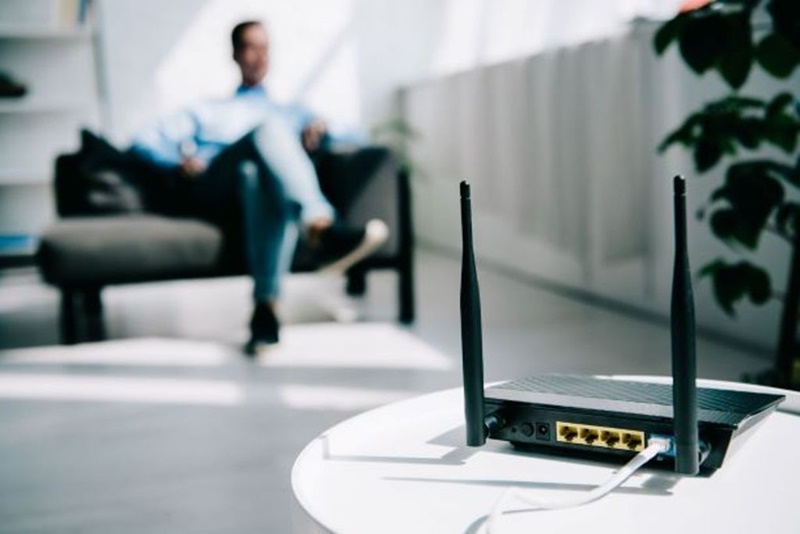In order to offer adequate network options for different types of customers, it is essential that providers define the correct use of the UN and ONT. Every context and need requires the use of one of these options.
To clear all your doubts about the UN and the ONT, we have prepared this explanatory content in which you will understand what each one means, their differences, proper uses, and strengths and weaknesses of these two types of equipment. Check out!
Function of the UN and ONT
Our UN and ONT are different types of devices that have the same function: they are responsible for forward internet signal from the provider to the physical location where the customers are.
The acronyms mean UN (Optical Network Units), or Optical Fiber Unit, and ONT (Optical Network Terminal) or Optical Network Terminal. These two different devices receive the optical signals sent by the OLT (Optical Line Terminal) and transform them into electrical signals, allowing customer devices to connect to the internet, either by cable or Wi-Fi signal.
However, the difference between them lies in the way the internet is delivered to the consumer. See below for more differences between the two.
What is UN?
Our ONU (Optical Fiber Unit) is a device that receives the internet signal from the provider (via OLT) and transforms it into electrical impulses. This device is located inside the client's home.
From it, cables of metallic pairs (UTP cable) come out. These are the cables that reach consumers' homes to offer internet services, with the need to install a router that performs the distribution of the internet by network cables or Wi-Fi signal.
The ONU's data transmission format is done in the FTTH architecture, translating, Fiber to the Home. Check out other relevant features about this equipment:
- It may have only one LAN port;
- Possibility or not of performing authentication PPPoE for users;
- Possibility of offering Wi-Fi signal to the client only with the use of a router.
What is ONT?
Our ONT (Optical Network Terminal), is equipment that is also located inside the end customer's home.
They are known as "modems", devices offered by the providers in lending, and the difference is that they also work with the router function. This type of device also needs an electrical connection to work.
The ONTs receive the OLT signal through fiber optic cables that are installed on poles or cabling in the streets. Then, the equipment converts the provider's optical signal through a passive optical network (ie PON network, Passive Optical Network), resulting in an electrical signal.
This “modem” usually offers more LAN ports for connecting other devices that use the internet signal, and can be connected with network cables.
The ONT is a very functional and versatile device, even serving to offer a telephone line signal in addition to internet access. Another option in this very common equipment today is the presence of wireless radios for connecting devices via Wi-Fi. These options provide a leaner installation without the need for a lot of wires and additional equipment.
As it is an equipment that will be in the care of the customer, it is important to pass on some information about its use and maintenance.
First, check the need to use it. He may prefer the installation to be done in a specific location to connect wired devices directly to the ONT, which helps to have a more stable and interference-free broadband access. By the way, it's worth checking out. how to position the router or ONT correctly for the best signal.
At first, it is important to know that the place must have air circulation, maintaining temperatures between 0°C and 40°C to avoid overheating of the equipment, which will cause damage and interrupt the service. Also check the outlet where the ONT will be connected, respecting the voltage of each model of equipment.
For both ONUs and ONTs, the fiber optic cable must be positioned so as to avoid a bend radius greater than 30 millimeters.
Anlix's Flashbox solution helps all sectors of the provider to remotely manage equipment in the customers' homes. In addition to being compatible with various router and ONT manufacturers, it offers an integrated environment to facilitate customer service. Learn all about Flashbox!
What are the main differences between UN and ONT?

Now that we've seen what each one is in detail, let's see a summary of the main differences between the two options, considering the use they can have in each case.
- Our UN, even being inside the user's house, it works only as a converter to provide access to the internet through a UTP cable, transforming the optical signal into an electrical one, but it does not have the technology to route it through several ports or Wi-Fi signal .
- already the ONT is a device that is on the customer's premises and that also converts the optical signal into electrical, and can be used to broadcast other services through the same equipment, such as routing through UTP cables, Wi-Fi and telephony via VoIP.
Therefore, the use of these devices differs well from each other, being recommended for specific cases and according to the need of the provider.
How to decide between UN and ONT?
Some characteristics differ in the use of providers to offer their services using ONU or ONT. See if some of these details make more sense according to what your company intends to offer the end customer.
Generally, the main decision factor for the provider is the costs involved in offering the 2 types of devices, as well as the type of plan and Wi-Fi coverage desired by the customer.
in the case of UN, as the device does not have the ability to route or transmit Wi-Fi signal, it is necessary to purchase other equipment that has the router function with LAN ports and offers wireless connection. In this scenario, it is easier to use solutions such as mesh nets.
Regarding the ONTs, they are offered as a solution with less equipment to manage and control inventory, but may have a lower Wi-Fi coverage and a higher cost, and it may also be unfeasible to carry out a setup using Wi-Fi Mesh.



Leave A Comment